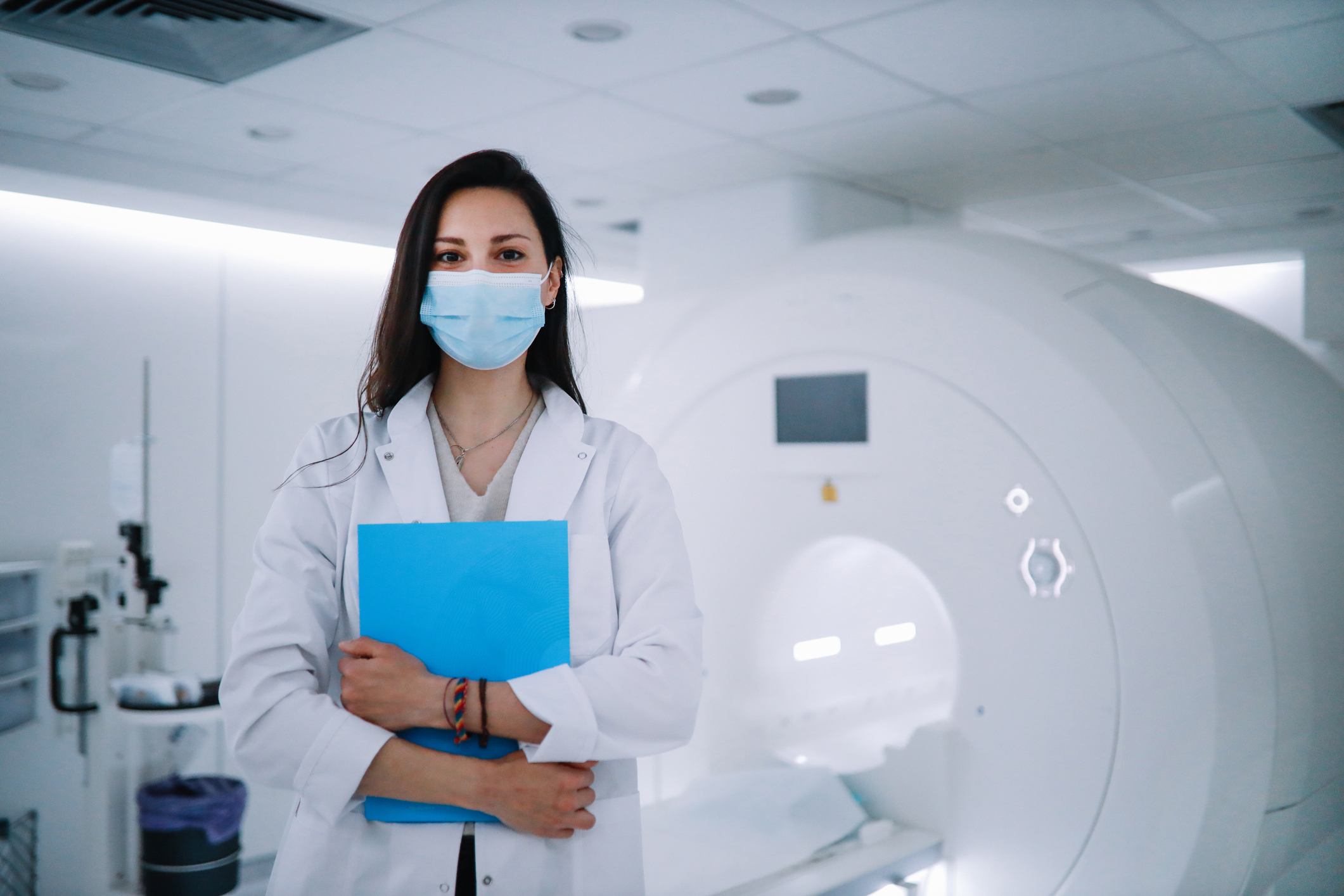
A patient's symptoms, physical exam and medical history are helpful clues your physician can use to make a diagnosis or evaluate if a treatment is working. But sometimes they also need to take a closer look inside the body to understand exactly what is going on.
Magnetic Resonance Imaging (MRI) is a large piece of equipment shaped like a capsule that creates detailed pictures of organs, tissues, and structures. The 3D images generated by the MRI are sent to a specialized computer and can be enlarged, measured, and viewed from different angles. The machine, which is typically enclosed on all sides, works by creating a strong magnetic field around the patient.
Rita Yeretsian, MD, Co-Chief of Neuroradiology at Summit Health, specializes in using imaging equipment like MRIs to diagnose and treat diseases that affect the brain, spinal cord, neck, and bones. She shares answers to some of the most common questions patients ask about MRIs.
Q. How does an MRI work?
An MRI uses very strong magnets and radio frequency pulses to generate signals from the body. Every hydrogen atom in the body acts like a tiny magnet. An MRI scanner uses a huge magnet and radio waves to generate signals from these hydrogen ions. The signals are detected by a radio antenna within the scanner. They are then processed by a computer to create detailed images of the inside of the body.
Q. Is an MRI safe?
MRI is a non-invasive imaging technique that does not use ionizing radiation. It is different from imaging scans like X-rays and CT scans that use a very small, targeted amount of radiation to develop images. As a result, MRI is generally considered safe for patients who have been properly screened. During the scan, you will not feel any pain or know the magnetic field is moving around your body.
Q. Who should not get an MRI?
Every patient is rigorously screened for certain metal or implanted devices in their body. Anyone with metal — whether it is bullet shrapnel or an implant from a prior surgery — will need to provide detailed information regarding the specific type of metal and where it is located prior to the MRI. Sometimes, an MRI cannot be performed. Other times, after this evaluation, the MRI can be performed with some modifications.
Pregnant women should generally wait until the second trimester if an MRI is needed. The effects of MRI on the developing fetus are still not well understood; however, MRI is usually performed in pregnant women when there is an emergent concern that cannot wait, such as diagnosing appendicitis or stroke. It may be performed in other situations as well after a discussion with your doctor about the risks and benefits.
Q. What is an MRI used for? What conditions can it diagnose?
MRI is the best imaging method to look inside the brain for a stroke, tumor, infection, multiple sclerosis, and many other diseases. The scan is excellent at depicting the joints, whether it is to identify arthritis or an injury of a ligament, muscle, or tendon. It can also be used to evaluate the heart and blood vessels throughout the body. MRI can often better characterize findings in the organs that may be seen on a CT exam, sometimes avoiding the need for follow-up imaging exams or biopsy. In addition, MRIs have become extremely helpful in diagnosing breast cancer.
Q. What should I expect when I get an MRI?
When you get an MRI, you will be asked to change into a gown and remove any objects with metal, such as a watch, earrings, hearing aids, or dentures. You will be given a detailed screening questionnaire about your prior surgical history to determine if you have a pacemaker or joint replacement and evaluate your potential exposure to metal at work.
If it is deemed that you can proceed with the MRI, you will lie on a moving table that slides in and out of the open cylinder. Since MRIs can be loud, you will be given headphones or earplugs to protect your hearing. The MRI machine makes loud banging or knocking noises during the exam from the effects of the magnetic field and radio waves. You will also be given a call button in case you need assistance from the technologist who operates the machine. The MRI can take anywhere from 15 to 60 minutes depending on the body part and number of areas being imaged.
Q. What happens if I get claustrophobic? Are there open and closed MRIs?
Let your technologist know if you are claustrophobic. They can work with you to make the exam as comfortable as possible and answer any questions you may have. Your doctor can also prescribe medicine to help you relax. If that is not enough, MRI exams can sometimes be scheduled with anesthesia as well.
Q. What is an open MRI?
An open MRI looks like a donut and is not enclosed on any of the sides. While there are open MRI machines, Summit Health does not have one at this time. Summit Health uses closed MRIs because they generally offer superior image quality when compared to open MRI systems. Some exams that require higher detail, such as a breast or cardiac MRI, cannot be performed at all on an open system.
Q. What is an MRI with contrast? Are there any precautions I should know about?
Sometimes your physician may need a more detailed image. A gadolinium-based contrast agent (GBCA) is a special type of dye that is injected into your arm prior to the MRI. The material lights up during the scan and improves the quality of the image.
Less than one percent of people will experience an allergic reaction to the contrast agent. You may feel a cold or flushing sensation when it is first injected. A few patients report mild side effects like headaches or nausea the day after the scan. Pregnant women should not receive an MRI with contrast.
